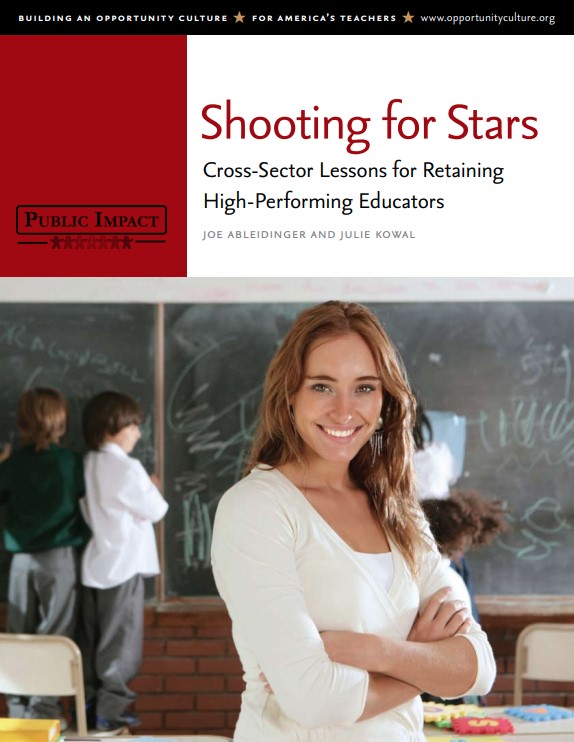What can we learn from other sectors about teacher retention? How to keep our nation’s best.
Education actually has lower turnover rates than most other professions. Our real shortcoming has been the failure to retain more high performers. This report, written with support from the Bill & Melinda Gates Foundation, identifies four common strategies employed by other sectors to disproportionately retain high performers and discusses how committed education leaders could begin applying these strategies right now.
When high-performing teachers across the country leave our classrooms each year, 750,000 children find themselves assigned to a less-effective teacher in each subsequent year. How could education leaders reduce this outflow? In this report, we examine the research and case studies outside education to reveal four key strategies organizations successfully use to boost high-performer retention:
- Pay with purpose. Pay matters more to high performers than other employees, and research shows that it can keep them or send them fleeing. Jobs with competitive, differentiated pay and timely raises make it more likely that high performers will stay.
- Give high performers mountains to climb. In addition to the salary increases or bonuses that often accompany them, promotions and opportunities for advancement boost retention, especially of high performers.
- Design flexible and challenging work roles. High-performing employees value opportunities to step into new roles and take on new challenges, even ones that do not involve linear advancement.
- Build lasting teams. Informative hiring processes that select people likely to stay can improve both performance and retention of high performers. After hiring, grouping high performers together improves collective performance and lowers turnover.
Additional tactics such as enhancing organizational prestige, training and mentoring high performers, providing lifestyle perks, and keeping lines of communication open can help. If these systemic strategies do not succeed in keeping a high-performing employee, many employers will “go to the mat” with individualized strategies. These might include higher compensation, a new job role or work assignment, work scheduling flexibility, or any number of other changes important to the employee.
Very successful organizations in other sectors have recognized that, despite their best retention efforts, some high performers will inevitably leave. They prepare for this reality—and maximize the value of their stars while they can—by maintaining relationships with star performers who exit, leaving non-hires with positive impressions, and hiring ex-employees as contractors.
The best approach to high-performer retention may be a portfolio of initiatives that includes organization-wide policies, actions to keep individual high performers, and practices to maintain positive relationships with departing stars. Some retention tactics require policy changes to implement in K–12 public education, but many do not. Determined education leaders can take these steps to retain more great teachers:
- Make high-performer retention a top priority.
- Set high-performer retention goals—and then measure success.
- Use retention tactics that do not require policy changes—right away.
- Rebuild education policies to provide opportunities and rewards for our nation’s great teachers—and the children they could serve.

